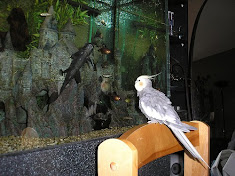The best time to start your training on the sitting trot is after you've mastered the classical seat. Due to the fact that the classical seat permits you to sit securely and deeply you should try to master this seat before trying the sitting trot.
 |
| Johnnie Trotting #3 by Eileen Terwilliger |
1. Cross your stirrups over the horse's shoulder and have someone lunge the horse. By doing this you can focus on your posture and balance and not have to concentrate on steering your horse. Tie the reins in a knot over the horse's withers so they are neither too tight nor too slack. Now think about your seat, focus on achieving a classical seat but don't worry too much about dropping your heels. Concentrate on sitting deeply and keeping your legs far apart. Hold the pommel lightly and rest the inside hand on your leg. Ask the person lunging the horse to get the horse started on a slow trot and concentrate on maintaining the classical seat as much as possible but do not allow yourself to tense up. Do not grip the saddle too tightly with your hand as this will cause you to become rigid. Focus on the horse's forward rhythm while maintaining regular breathing. Try to relax as much as possible.
2. Once you begin feeling more confident about sitting to the trot you should start holding your hands as if they were holding the reins. Keep your upper arms to your side and your forearms should feel like the natural extension to the reins (even though you are not actually holding the reins). If you begin to tense up concentrate on relaxing. Keep breathing, feel the warmth of the sun, enjoy your surroundings and most importantly, enjoy the ride! Remain relaxed at all times while maintaining proper body position.
3. Once of the best exercises to perfect the sitting trot is to ride bareback. The classical seat will still apply but relax your heels and don't try too hard to keep them down. Use a neckstrap to help maintain balance if you feel insecure. Instruct the person lunging your horse to cue the horse to gently trot for 4-5 strides then to walk a little, then to trot for 5-6 strides and return to the walk. Alternating walking and trotting helps your body relax if you've tensed up during the trot.
Practice frequently and you should be able to master the sitting trot in no time. Learning how to sit to the trot will dramatically improve your balance and riding skills as you will learn to balance and easily control your horse at the trot.
Author Resource: Written by Josie Amani
Stal Amani is an impeccable equestrian centre complete with three indoor and outdoor arenas. We regularly hold show jumping and dressage competitions from novice up to Grand Prix level and due to our central location in Belgium, the facility is ideal for foreign competitors looking for a temporary or permanent base in Europe. We are minutes away from Herentals. http://www.stalamani.com
Article From Pet Article World



0 comments:
Post a Comment